An Expert Pest Control Service
Across Central Scotland
Service + Protection = Peace of Mind
Strathearn Pest Control is one of Central Scotland’s leading independent pest control companies. We provide professional pest prevention and control solutions for residential, commercial and agricultural clients throughout Scotland.
If there is a problem our rapid response commitment means a local technician will be with you quickly and will deal with your pest problem. Our trained technicians will respond to emergency call outs within 24 hours
Request a Call Back
Our Domestic Pest Control Services in Scotland
Rat Control
Rats can quickly get out of hand with serious consequences including:
- Damage to the fabric of buildings, chewed wires, cables etc.
- Contamination of foodstuffs
- The spread of disease through direct and indirect contact including: Salmonella; Weils Disease; Lymes disease.
If you have a problem our rapid response commitment means a local technician will be with you within 24hrs to deal with your pest problem.
All our technicians are trained, experienced and undergo continual professional development ensuring that you are in safe hands when employing our services.
- Damage to the fabric of buildings, chewed electrical wires and cables, fractured water and gas pipes etc
- They eat practically anything we eat and their urine and droppings will contaminate all foodstuffs they come in to contact with
- The spread of disease through direct and indirect contact including : Salmonella; Weils Disease; Lyme Disease.
- Stored items in basement or loft spaces – possessions, documents etc – can be damaged beyond repair.
- The presence of rats will damage the reputation and profitability of any business.
- Property owners have a legal obligation under the Prevention of Damage by Pests Act 1949 to keep premises rodent free.
- Identify the ‘hotspots’ or areas where the rats are most active
- Lay tamper-resistant rodenticidal baits in secure locations. We always use tamper-resistant bait stations where there is a risk of access to bait by children or animals.
- The bait preparations include a toxic ingredient which kills the rats efficiently and humanely.
- We carry out follow-up visits and will continue baiting until the signs of rat activity disappear.
- We will then make recommendations, including proofing, to prevent any further infestation in the future.
Mouse Control
If left unchecked, a resident mouse population can quickly get out of hand, with a number of serious consequences:
- Damage to the fabric of buildings, chewed wires, cables etc.
- Contamination of foodstuffs.
- The spread of disease, including Salmonella, through direct and indirect contact.
If you have a problem our rapid response commitment means a local technician will be with you within 24hrs to deal with your pest problem.
All our technicians are trained, experienced and undergo continual professional development ensuring that you are in safe hands when employing our services.
- Damage to the fabric of buildings, chewed electrical wires and cables, chewed insulation and water pipes etc with the risk of electrical fire or water damage
- They eat practically anything that we eat and their urine and droppings will contaminate any foodstuff they come in to contact with
- The spread of disease, including salmonella, through direct and indirect contact
- They gnaw into materials such as paper, wood, insulation etc which they use as nesting material
- Identify the ‘hotspots’ or areas where the mice are most active
- Lay baits in tamper-resistant bait stations, particularly where there is a risk of access to bait by children or animals
- The bait preparations include a toxic ingredient which kills the mice efficiently and humanely.
- Follow-up visits and continue baiting until the signs of mice activity disappear
- Make recommendations, including proofing, to prevent any further infestation in the future
Cluster Fly Control
While Cluster Flies can be a great nuisance they dont normally represent a health hazard. However, they can:
- Produce a rather sickly smell when clustered in large numbers.
- Be upsetting and unnerving if disturbed during hibernation
- Be unsightly when flying or when found in and around window frames.
If you have a problem our rapid response commitment means a local technician will be with you within 24hrs to deal with your pest problem.
All our technicians are trained, experienced and undergo continual professional development ensuring that you are in safe hands when employing our services.
- Produce a rather sickly smell when clustered in large numbers
- Be upsetting or unnerving if disturbed during hibernation
- Be unsightly when flying or when found in and around window frames
- Cluster flies may congregate and die in wall spaces, voids and lofts etc and then attract other insects eg the larder beetle
- The flies can contaminate foodstuff and spread diseases
Bed Bug Control
The presence of bedbugs can be detected by the following :
- blood spotting on bedding
- brown excrement spots close to where they live and on bedding
- whitish/opaque un-hatched and hatched eggs
- in heavy infestations, a sweet almond smell is common
- bedbugs are not normally seen during the day
If you have a problem our rapid response commitment means a local technician will be with you within 24hrs to deal with your pest problem.
All our technicians are trained, experienced and undergo continual professional development ensuring that you are in safe hands when employing our services.
- They feed on human blood, usually at night whilst people are asleep in their beds
- Bites cause irritation and itching
- Some people are particularly sensitive to the bites and experience an allergy and inflammation which can be quite severe and require medical attention.
- Complete a meticulous survey of the affected room and all adjoining areas.
- Approved Insecticidal treatment will then be required to eradicate the problem.
- The treatment is thorough and extensive and will include treatment of furniture, skirtings and picture rails, curtains, bed frames, headboards and underneath the edges of carpets, etc.
- Treatment may be needed in any adjoining rooms above and below the affected floor, or all rooms on the same floor.
- A follow-up visit and spray treatment is then carried out with on going monitoring for signs of any re-infestation
Mole Control
Left unchecked, mole activity can have a number of consequences including:
- The uprooting of seedlings and plants and damage to
lawns, golf course fairways etc. - Stones from mole hills damage expensive harvesting and
ground maintenance equipment. - Valuable pasture land is lost because grass will not grow
due to mole hills.
If you have a problem our rapid response commitment means a local technician will be with you within 24hrs to deal with your pest problem.
All our technicians are trained, experienced and undergo continual professional development ensuring that you are in safe hands when employing our services.
- The moles’ tunnelling activity uproots seedlings and young plants
- Valuable pasture land is lost as mole hills prevent grass from growing
- Lawns become disfigured allowing weeds to become established
- Molehills may interfere with harvesting and the stones brought to the surface can cause considerable damage to farm machinery
- Mole tunnels can collapse under the weight of horses, cattle and sheep, causing tendon/ligament damage to valuable livestock
- The control of moles is through eradication
- This takes the form of either gassing or trapping
- Moles are very territorial. Any neighbouring moles may move into the cleared area which is why we often recommend a longer term monitoring and prevention plan
Moth Control
One of the most common of this type of pest is the Common Clothes Moth. The adult has a body length of between 6 – 8 mm and is buff brown in colour.
They are rarely seen in flight tending to run and they shun the light. It is the larvae that cause damage, feeding on natural fibres clothes etc found around any property – airing cupboards, wardrobes, upholstery etc.
If you have a problem our rapid response commitment means a local technician will be with you within 24hrs to deal with your pest problem.
All our technicians are trained, experienced and undergo continual professional development ensuring that you are in safe hands when employing our services.
- Great care is taken when treating for textile pests. Eggs and larvae may be hidden away in inaccessible cracks and crevices and failure to treat them will result in a re-infestation.
- Identify the source of the infestation and remove
- Apply an approved residual and non-staining insecticide
- Continue to monitor for any emerging larvae and unhatched eggs
Other Pest Control
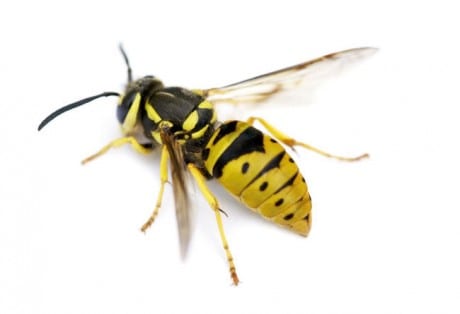
- Food contamination
- Sting injuries and distress
- Damage to property – chewing of woodwork and plasterboard
- Locate where the nest is
- Apply an approved insecticide onto the nest
- Within 2 hours of the treatment the nest will be destroyed.
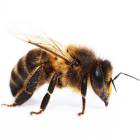
Why Control Bees?
Bees are beneficial to farmers and gardeners and play a vital role in pollination.However, sometimes the location of their nests can be problematic.- Bees may exploit houses in which to build their nests
- They can prove a nuisance and sting humans
- In some people, the sting can trigger an anaphylatic shock which can be fatal
Method of Bee Control
Wherever possible, bees, whatever species, should not be killed as they play a vital role in pollinating plant life. If, however, people are at a high risk of being stung, we can arrange for the necessary control :- Organise their removal by a professional Bee Keeper

Why Control Grey Squirrels?
The grey squirrel is a serious pest in plantations where it can cause serious damage by stripping bark from trees. It also, however, presents a number of other problems, if left unchecked, including :- Damage to parks and gardens where cereals, vegetables and fruit are taken
- Damage to buildings where access is gained to roof spaces leaving timbers, electrical wiring and plumbing at risk
Methods of Grey Squirrel Control
There are a number of different control methods available :- We normally use cages to trap the animals and then humanely remove them from the affected site.
- Other methods include shooting and drey-poking.
- We will also make recommendations about preventative measures including proofing.
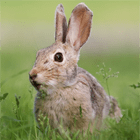
Why Control Rabbits?
Rabbit damage is a major economic problem for British agriculture, costing the industry an estimated £ 100 million by destroying crops and grazing. It’s not just farmers who suffer:- Bark may be gnawed from the base of tree trunks when other vegetation isn’t available
- Lawns and flower beds can be ruined by the digging and scraping of holes
- Golf courses suffer as holes are dug and the grass is killed by the acidic droppings
- Gardens are destroyed as flowers and bulbs and young trees are destroyed
Method of Rabbit Control
Occupiers of land have a legal obligation to control rabbits and to prevent them doing damage on neighbouring land. Controlling them takes two forms: exclusion or eradication- For exclusion we use rabbit-proof fencing, high enough to prevent rabbits from jumping over and buried deep enough into the ground to stop them from burrowing underneath it
- We use a number of different methods of eradication, determined by circumstances. This includes gassing, trapping or shooting
- After rabbits have been displaced we would always recommend rabbit-proofing to prevent any further infestation
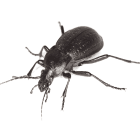
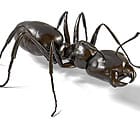
Why Control Ants?
If Ants are left untreated, they can cause a number of problems including :- Contamination by crawling on surfaces
- Infestation and waste of foods
- Loss of goodwill and prestige
Method of Control
Before we carry out any control, we will ensure the correct identification of ant species. Their effective control also depends on locating the full extent of the infestation.Garden ants The treatment is quite straightforward :
- We will apply an insecticidal treatment to destroy their trails and also at entry points to the building.
- Where possible, locate and destroy the nest.
- Alternatively we may use a baiting programme.
Pharoah’s ants The treatment is very different :
- We complete an extensive survey of the premises to identify all the affected areas.
- We then carry out a baiting programme, so that nests are destroyed.
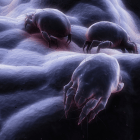
Why Control Mites?
- Mites can contaminate food sources
- They have been implicated in causing a number of diseases including dermatitis, respiratory tract irritation, asthma and intestinal upsets
- Grain or flour mites are important pests of cereals, dried fruits and vegetables
- In the Spring, pollen aggravates allergies and dust mite infestations make it worse
Method of Mite Control
- Vacuum cleaning, drying of the environment – removing the humidity in the air – and washing any affected furnishings are effective initial stages in the control method
- Contaminated food products should be destroyed
- Both of the above are carried out in conjunction with a spray treatment using an approved non-staining insecticide
- Particular attention will be paid to cracks and crevices
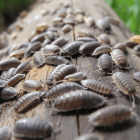
Why Control Woodlice?
- Woodlice are considered harmless to man and do not bite
- However, they are considered a pest
- There have been reports of woodlice causing damage to soft fruit
Method of Woodlice Control
- Identify the source eg damp timber and remove if possible
- To prevent further infestation work to lower moisture content in the air
- Carry out a spray treatment with an approved residual insecticide in any areas where woodlice are encroaching
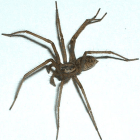
Why Control Spiders?
- Spiders, in the UK, are beneficial as predators of other insects and not harmful to man.
- They can cause, however, some distress to people with phobias
- They produce webs as a means of capturing their prey which can be unsightly
Method of Spider Control
- Regular vacuum cleaning of cob webs, the source of their food, will help prevent the build-up of spiders
- A barrier spray treatment with an approved insecticide to wall and floor edges can also be applied
- Insect monitors can be used to check for any re-infestation
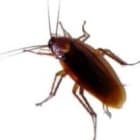
Why Control Cockroaches?
Cockroaches can seriously harm business reputations, particularly within the food industry, and create a number of problems, including :- Contamination of food
- Spread of disease
- Damage to goods other than foods
- Loss of goodwill
Method of Cockroach Control
- Infestations can be very deep-seated within buildings and need regular and thorough treatment to control them.
- This does vary depending on the type of cockroach. However, typically, we will treat all harbourages, cracks and crevices, with a suitable insecticidal spray.
- We will then follow this up with a further treatment a week later
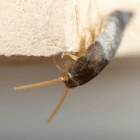
Why Control Silverfish?
- Damage to the fabric of buildings, chewed wires, cables etc
- Contamination of foodstuffs
- The spread of disease through direct and indirect contact including : Salmonella; Weils Disease; Lyme Disease.
Method of Silverfish Control
- Remove any infested items
- Apply an approved residual insecticide to cracks, crevices, floorboards, skirting boards etc
- Dehumifying reduces the moisture content of the air that Silverfish find essential

Why Control Fleas?
Fleas will normally only feed on their host ie cat or dog. However, they frequently bite humans with the following results :- Some people are particularly sensitive to the bites and experience an allergy and inflammation which can be quite severe and require medical attention.
- In addition, some may also experience intense itching and scratching
Methods of Flea Control
- Identify the source of the infestation
- Carry out a spray treatment with an approved insecticide to kill the adult fleas and larvae.
- Before doing this, a thorough vacuum clean of the premises should be undertaken.
- The affected animal should also receive treatment from a vet.
- Pupa can occasionally survive treatment, so a second spray treatment may be required to ensure adequate insecticide is available when they eventually hatch out!
why choose strathearn pest control
Over 40 Years Experience
We provide safe, reliable and effective pest control services, giving our clients peace of mind and the reassurance of professional pest solutions.
The company is justifiably proud of it’s heritage, prouder still that it continues to uphold the tradition of the customer service that Bob Wilkie considered to be the cornerstone of his business when he started the company 40 years ago.
The Strathearn Advantage
Independent Family Business – Established 1979
Rapid Response Service
No Commission Based Sales
Professionally Trained Technicians – RSPH Level 2
Fully Insured
Health & Safety Accredited Contractor
British Pest Control Association Member
CRRU Compliant Services
Domestic, Commercial and Agricultural
Extensive Site Surveys
For more information about our Pest Control Services where you live, follow the links below.







